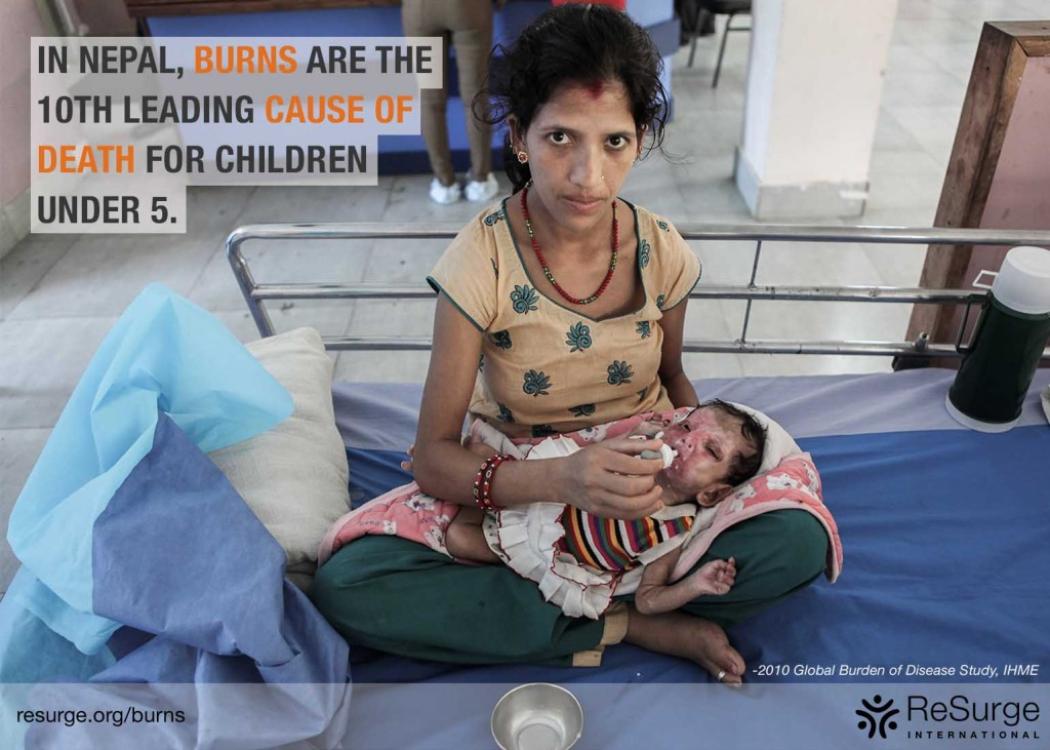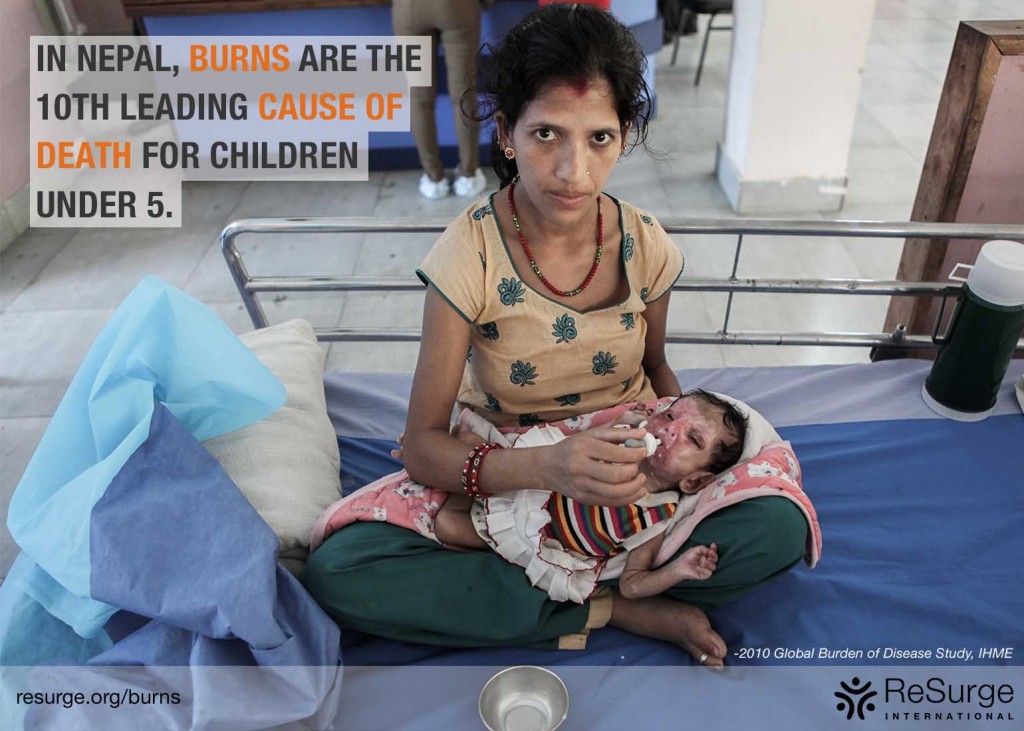Three Ways for Health Workers to Mitigate a Hidden Global Crisis

By Susan W. Hayes, ReSurge International
The birth of a child is typically a time of happiness and celebration. But in Nepal a family’s joy turned to horror when during a traditional birth ceremony, 2-month-old Astha fell from her mother’s lap into an open fire. She was scooped from the flames and survived, but suffered severe burns all over her face.
Unable to get the appropriate immediate treatment she needed, Astha’s injury quickly began to “heal” itself, and scars formed over her face to the point that her mouth was sealed almost completely closed. Unable to suck, Astha was only able to eat through a small eyedropper.
Luckily, at this point Astha's mother brought her to the hospital where a ReSurge International Surgical Outreach Program operates year-round. Dr. Nancy Chee, one of our volunteer occupational therapists and a 2014 REAL Award honoree, was there at the time. She and her Nepali trainee, Mohan Dangol, fashioned a small plastic splint that could hook on the corners of Astha’s mouth and stretch it open. Within days, Astha’s mouth opened enough for her to suck again.
Astha was fortunate to have found health workers with the necessary training and creativity to treat her burns, giving her the chance to survive and live a life free of disability. This is unfortunately not the case for many children in her country.
With many still using open flames to cook, heat and light their homes, the burns crisis in Nepal is severe. Burns are the second most common injury in rural Nepal and the 10th leading cause of death for children under age 5. Add to this situation a chronic shortage of health workers – on average, there are only about 2 physicians for every 10,000 people in Nepal – and it is not difficult to understand why burns are also the 11th leading cause of disability-adjusted life years (DALYs) for children under 5.
Many do not know that burns can also cause disability, because we don’t often see it in developed countries. However, when a burn survivor does not have access to basic medical care and the injury is left to heal by itself, a permanent tightening of the skin occurs as the body closes the wound. As a result, even a minor burn can restrict one’s ability to walk or cause a working hand to become an unusable fist.
But during our nearly 45 years of providing reconstructive surgery, we have learned that when burn survivors are given simple and affordable treatment like the kind Astha received soon after a burn injury, the burn disability is often reduced in severity or avoided altogether.
The global health crisis of burns afflicting more than 10 million people in developing countries annually can be tackled, but an expanded and improved health workforce is needed.
The fact that the global shortage of health workers now stands at 7.2 million and counting is widely acknowledged. To reduce the number of debilitating burn injuries in Nepal and in other developing countries, an expanded force of frontline health workers is undoubtedly necessary.
Beyond increasing the number of health workers, these workers must also be equipped to provide appropriate burn care by focusing on three areas: prevention, training and treatment.
1. Burn injuries are easily preventable. With community health workers actively carrying out burn awareness campaigns at the local level and teaching people basic fire safety measures, a great number of injuries can be prevented.
2. Community management of burn injuries should be improved. Health workers should know what to do when a burn victim enters their health post or clinic, administering appropriate first aid or referring the patient for advanced treatment. Ministries of health should establish a clear medical referral system and sufficient training so that burn victims like Astha receive the care they need.
3. Physicians should be equipped with the instruction and tools necessary to provide appropriate care. Once burn patients are referred to a physician, simple surgery or sometimes splinting alone can keep burn injuries from becoming severe disabilities. And with training in reconstructive surgery, surgeons can learn to repair existing burn disabilities, like our partner surgeons do in the developing countries where we work.
With National Burn Awareness Week approaching, let’s remain mindful that 95% of severe burns occur in developing countries. Frontline health workers will be critical in addressing the hidden crisis of burns, and policymakers here in the United States and around the world must ensure that more is done to ensure that burns are prevented, managed and treated through an expanded and strengthened health workforce.

